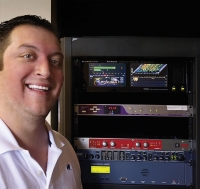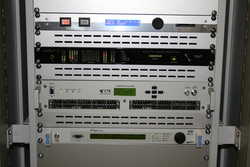AIR-4: Perfect for WMCO
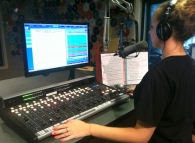 While we recieve fan mail pretty regularly, something about this one just made us smile:
While we recieve fan mail pretty regularly, something about this one just made us smile:
Hello Jay,
I stopped by your booth (at NAB) to look at the AIR-4 console and you showed me around. Well...we bought one. For the money, nothing beats it. Such a simple and straightforward install.
So far, every student DJ that has worked a shift has immediately loved it. In their words-
'The buttons are bright and easy to understand. In short, the AIR 4 just makes sense.'
Once we unload (our existing boards) , we are buying another AIR-4 - hopefully by the end of summer.
Thanks!
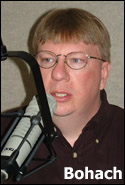 Mark Bohach
Mark Bohach
Engineer
WMCO- Muskingum University
New Concord, Ohio 43762
The Really Great Gig:
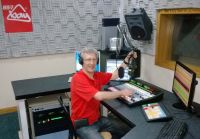 Markus Stocker of Media Engineering, Switzerland, wrote to us about one of his recent projects, which he calls the "Great Gig in the Sky."
Markus Stocker of Media Engineering, Switzerland, wrote to us about one of his recent projects, which he calls the "Great Gig in the Sky."
Rebuilding BAY89.7's Studio-1 in Malta with an E-1 console two years ago was fun and rebuilding BAY89.7's Studio-2 more recently with a newer IP-12 console was fun, too. But the really "great gig in the sky" was when we interconnected the two studios together with one single Cat6 cable. Predictably, networking the two went flawlessly. With a few clicks of the NAVIGATOR software, a large number of signals already on the WheatNet-IP network in Studio-1 routed over to the IP-12 console in the refurbished Studio-2. As a matter of fact, we were able to interconnect within minutes scads of signals, sends, returns and LIOs – all of which required hardwiring in earlier days with dozens of cables and connectors; patch panels and punch blocks; and too many test points to count.
What a difference an intelligent network can make!
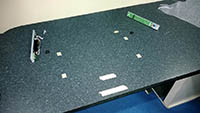 |
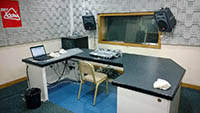 |
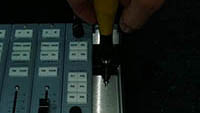 |
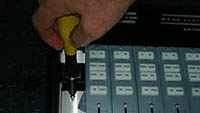 |
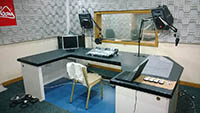 |
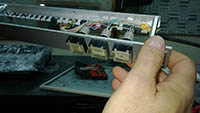 |
 |
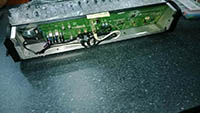 |
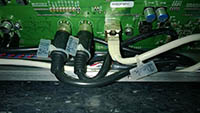 |
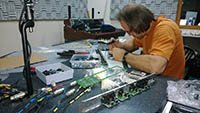 |
 |
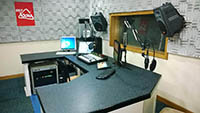 |
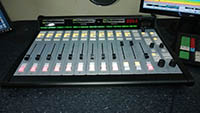 |
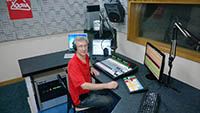 |
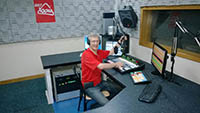 |
KTWN-FM First to Air All-Digital Air Chain
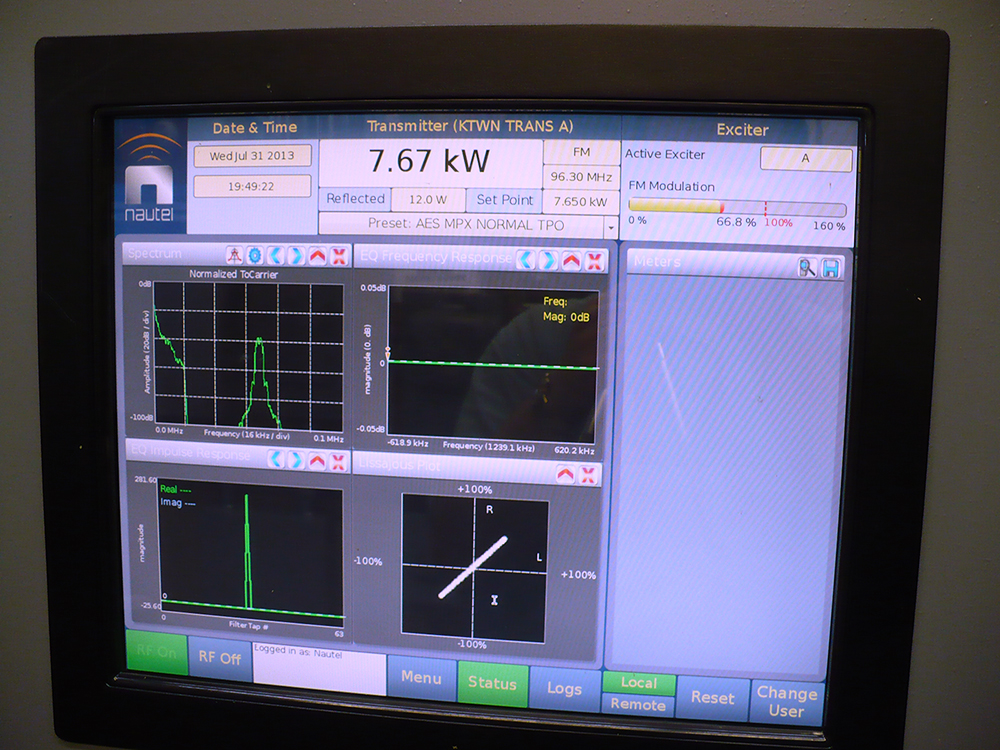 A Minneapolis station became the first to broadcast with an all-digital air chain using Wheatstone® baseband192 technology into their Nautel transmitter, marking an historical event in radio transmission.
A Minneapolis station became the first to broadcast with an all-digital air chain using Wheatstone® baseband192 technology into their Nautel transmitter, marking an historical event in radio transmission.
Northern Lights’ KTWN-FM (96.3) went on the air with Wheatstone’s new AirAura X3 audio processor in July 2013, clearing the last obstacle to a 100% digital air chain by using the processor’s new baseband192 interface into a Nautel transmitter.
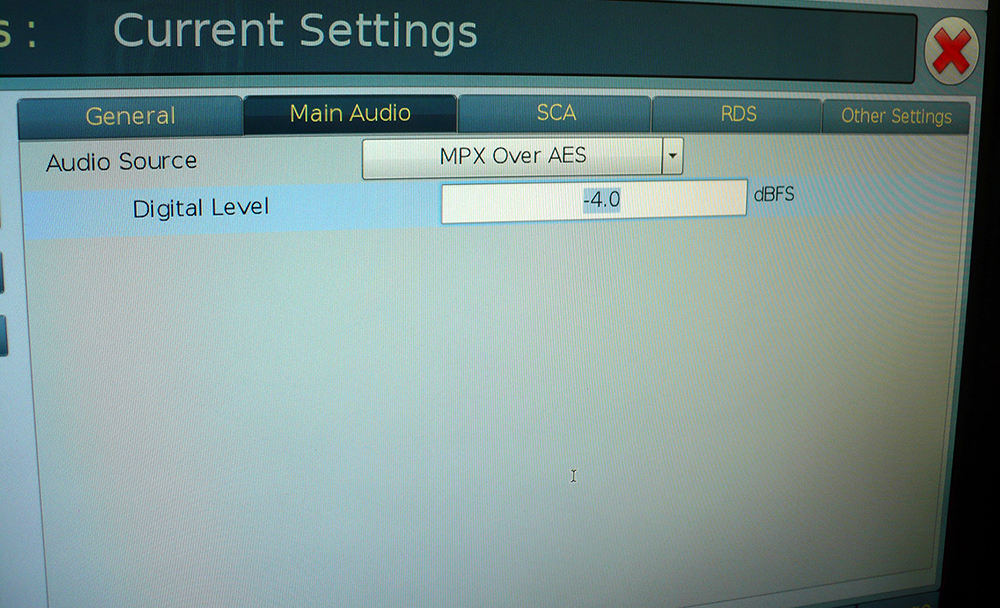 Wheatstone baseband192 is an open standard technology that eliminates the need for an analog composite interface between processing and transmission. Offering AES-EBU output into FM transmitters now equipped with a digital baseband input, the baseband192 interface is available as a standard feature in Wheatstone AirAura X3, FM-531HD and VP-8IP audio processors.
Wheatstone baseband192 is an open standard technology that eliminates the need for an analog composite interface between processing and transmission. Offering AES-EBU output into FM transmitters now equipped with a digital baseband input, the baseband192 interface is available as a standard feature in Wheatstone AirAura X3, FM-531HD and VP-8IP audio processors.
“Up until now, the technology didn’t exist to give us the digital connectivity between the processor and the transmitter without it affecting on-air loudness,” said Northern Lights engineering manager Rob Goldberg, who worked with broadcast colleague Mike Oberg to achieve a loud, yet detailed sound 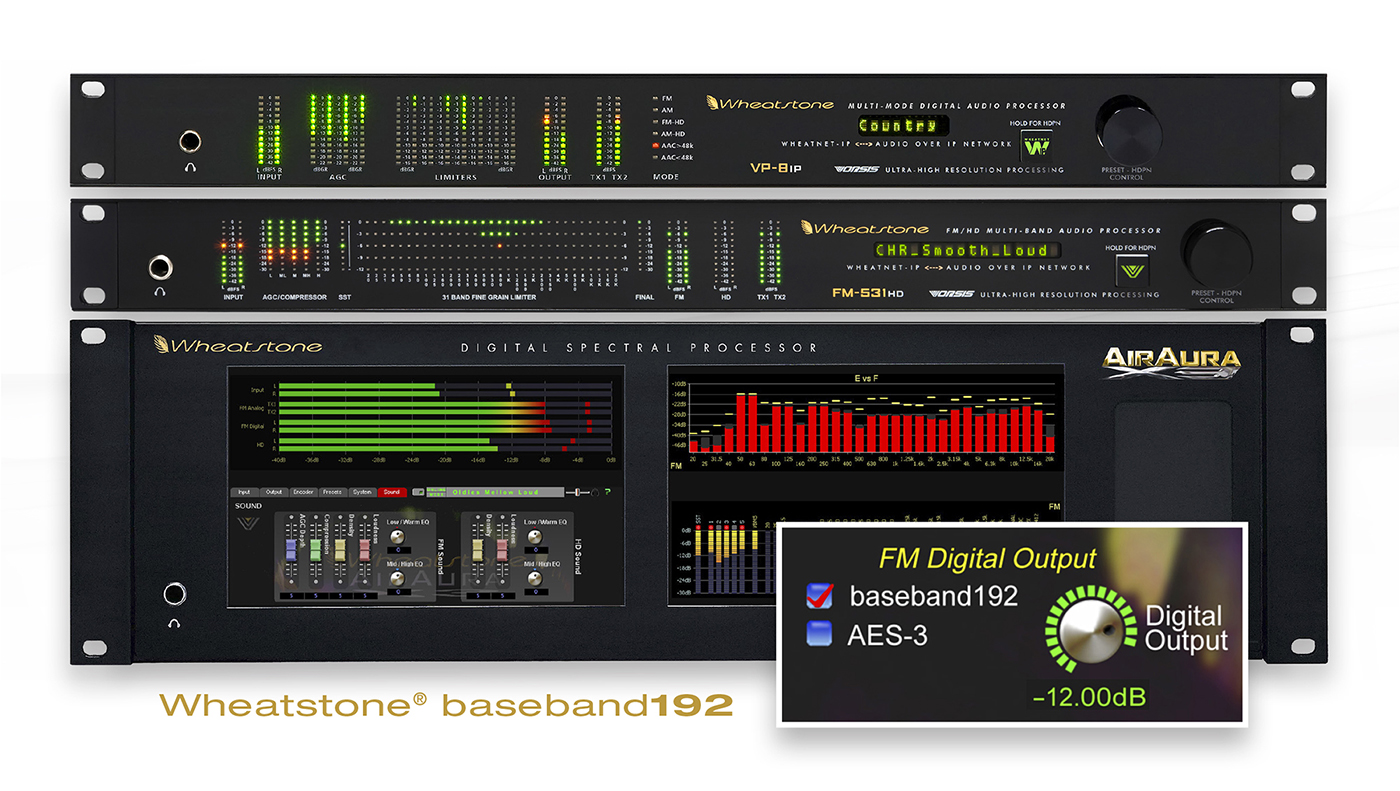 from the AirAura X3. Unlike other approaches, baseband192 digitizes the entire multiplex spectrum including the RDS and SCAs up to 67 kHz for direct AES-EBU into the FM exciter. Unique to baseband192 is the ability to piggyback the RDS and SCA signals in digital form, eliminating the need to re-route these signals directly to the FM exciter instead of passing RDS and SCA signals through the processor (as is the practice without the digital multiplex interface). A single AES-EBU cable between the Wheatstone processor and the transmitter carries the baseband signal, bypassing the need for multiplexing in the exciter and eliminating the resulting signal overshoot and associated loudness tradeoff. Because the baseband192 signal encompasses the entire multiplex spectrum after stereo generation, it also includes any loudness increases that may have been contributed by the FM processor’s composite clipper.
from the AirAura X3. Unlike other approaches, baseband192 digitizes the entire multiplex spectrum including the RDS and SCAs up to 67 kHz for direct AES-EBU into the FM exciter. Unique to baseband192 is the ability to piggyback the RDS and SCA signals in digital form, eliminating the need to re-route these signals directly to the FM exciter instead of passing RDS and SCA signals through the processor (as is the practice without the digital multiplex interface). A single AES-EBU cable between the Wheatstone processor and the transmitter carries the baseband signal, bypassing the need for multiplexing in the exciter and eliminating the resulting signal overshoot and associated loudness tradeoff. Because the baseband192 signal encompasses the entire multiplex spectrum after stereo generation, it also includes any loudness increases that may have been contributed by the FM processor’s composite clipper.
“We are finally opening the door to a completely digital air chain, from the audio playout system to the transmitter’s digital FM modulator,” said Jeff Keith, Wheatstone senior product design engineer, adding that baseband192 was built into the original AirAura four years ago but had been held back until FM transmitter manufacturers could offer a digital multiplex interface to their transmitters. At the recent NAB 2013 convention, transmitter manufacturers announced upgrades to their FM exciters that could accept the necessary digital multiplex signal.
The data format that transmitter manufacturers chose is a high-speed version of AES3 in which the stereo multiplex spectrum is handed to the exciter as a 192 kHz AES3-formatted signal. Baseband192 provides a digital multiplex output using the FM processing chain’s AES3 digital output. In addition to other benefits, standardizing on this format allows for maximum flexibility around the broadcast plant because it uses standard 110 ohm balanced digital cables and familiar XLR connectors.
Kids, Grandmas and the E-1 Console:
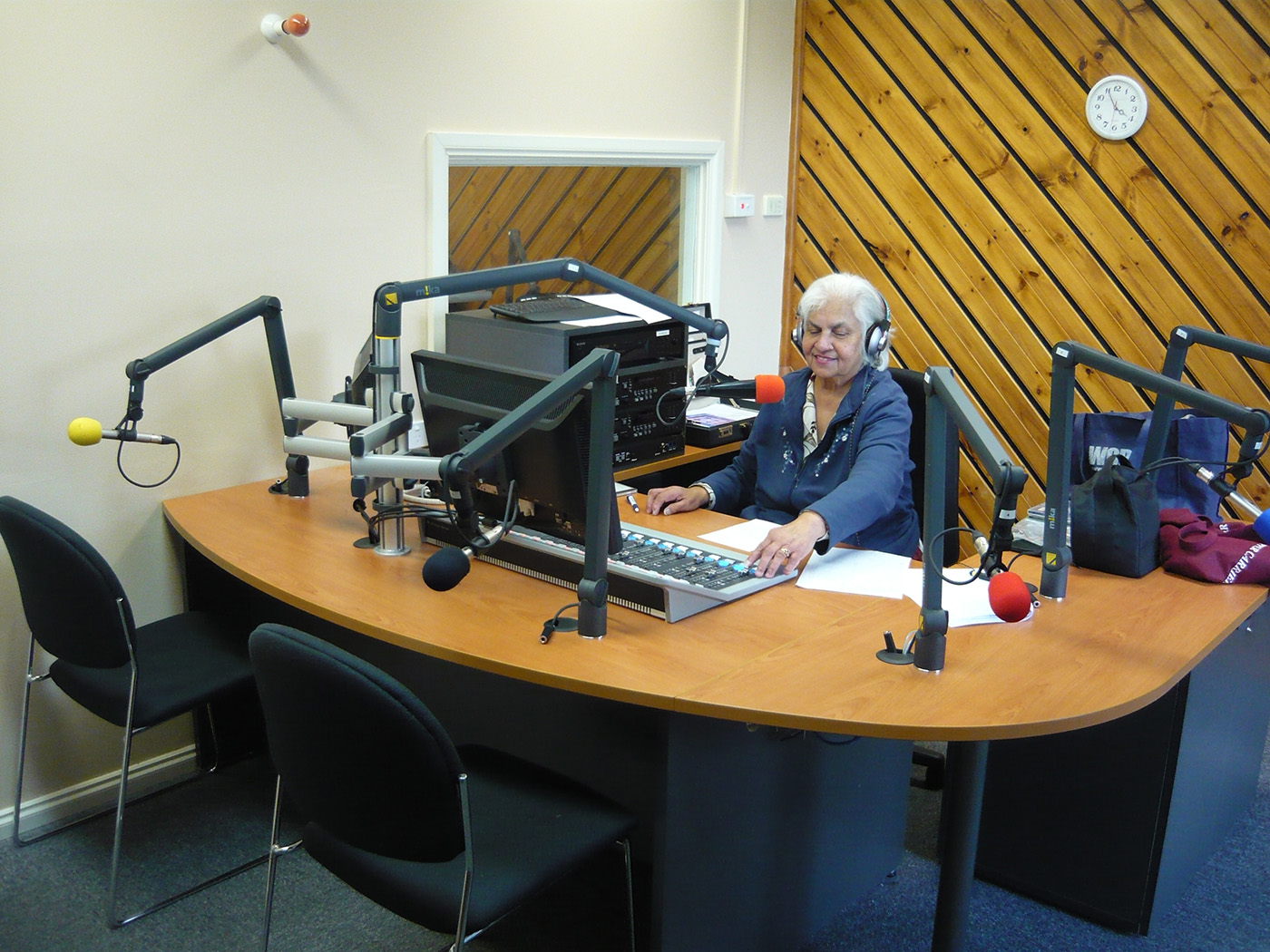 When we sent off a new WheatNet-IP system with E-1 control surfaces to Casey Radio near Melbourne late last year, we knew the system was headed into rough territory.
When we sent off a new WheatNet-IP system with E-1 control surfaces to Casey Radio near Melbourne late last year, we knew the system was headed into rough territory.
Casey Radio 97.7 is a community station on the outskirts of Melbourne run by 80 volunteers. Some are retirees who spin their favorite Frank Sinatra records on Technics turntables. Others are high schoolers who like to push the subs all the way down to the basement.
All shared the same studios and consoles, but had very different views of what to expect when the station transitioned from old analog consoles with punch-block routing to newer Wheatstone digital consoles with WheatNet-IP intelligent routing.
“I was especially concerned about one of our older volunteers and thought that going digital could very well be the end of broadcasting for her. But she’s doing quite well. She can actually see more clearly if a channel is on or off, and it’s a lot easier for her to put together a program,” says Stuart Merrick, the technician for Casey Radio. Merrick worked with local Wheatstone rep Ian Thomson, now with Agile Broadcast, to set up simple presets in the E-1 consoles so that volunteers can change the surface to their style of programming with the touch of a button.
A volunteer presenting a talk program requiring several microphones and a telephone interface can hit one of four programmable buttons on the E-1 and all the channels change to that setup. Another volunteer presenting a music format requiring access to several CD players and only one mic can press another programmable button on the E-1 for that particular setup.
“I had initial doubts that all our volunteers could make the transition, but digital gives us so much more flexibility,” says Merrick, who also had doubts that the community station, which is funded mainly by the city council, could afford to move up to audio-over-IP technology.
Casey Radio purchased the WheatNet-IP system with two E-1 consoles, six BLADE access units and three WheatNet-PC Software BLADEs for not much more than an analog equivalent would have cost. “I didn’t realize at first that IP technology was within our reach,” adds Merrick.
Merrick tells us that the Wheatstone consoles and IP network are holding up to the workload and the variety of operator styles. With the studio project on the books, he is now on to his next IT project. Recently, he ordered our Glass-E virtual mixer interface for his laptop and is using this with his Tieline codec to get complete control of the consoles from any offsite location with wireless access.
He sent us an update recently telling us he’s used the setup to remotely control one of the E-1 control surfaces from the sidelines of a football game, and again to remotely recover settings on an E-1 for one volunteer – while sitting in his parked car.
With 80 station volunteers running the controls, one never knows when one might need to make a remote emergency console adjustment from time to time.
Entravision
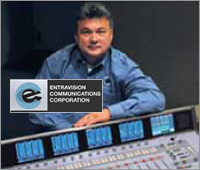
For Entravision, with multiple stations in multiple markets, a network with flexible functionality and reliability is key to maintaining the strongest on-air presence with absolutely no downtime. Listeners depend on Entravision for content tailored to each community as well as demographically relevant programming across the grid. Wheatstone’s WheatNet-Bridge TDM systems make it possible to keep such a network up and running around the clock.
Entravision currently has Wheatstone TDM systems in 5 of their markets – including Los Angeles where 27 surfaces provide programming for their eight Los Angeles area transmitter sites and seven satellite uplink networks. Rick Hunt, Vice President and Director of Radio Engineering at Entravision Communications Corporation knows that taking chances with unproven or ad-hoc technology simply isn’t feasible – that the ultimate cost of using less than the best can be detrimental not only to day-to-day operations but to their overall success.
“Entravision prides itself on delivering the highest quality content and programming to our loyal base of radio and television audiences, and we rely on the Wheatstone system as an important piece of our broadcast equipment. The system is versatile, easy to manage and one of the most advanced pieces of technology on the market. It also delivers an unmatched level of consistancy, ensuring that our systems operate the same way regardless of size or location.”
Moving Along
 It's hard to find a broadcast engineer these days who isn't on the move.
It's hard to find a broadcast engineer these days who isn't on the move.
The closest candidate is John Rigg, director of engineering for Clear Channel in San Diego. And by move, we mean actual address move – as in, moving the studios to a new location. Otherwise, we're sure that Rigg is constantly on the move with seven stations and 40 studios under his care in one of the nation's top rated markets.
What we find unique about Rigg, besides his acute sense of humor, is that he's updating Clear Channel's broadcast facility on Granite Ridge Drive one studio at a time. More often, we find that broadcasters make sweeping routing and console changes only when they build out an entirely new facility in a new location. But not Rigg.
He started in January of this year, and when it's all said and done, Rigg will have overlaid a 40-studio analog infrastructure of punch blocks and wiring with IP routing and control surfaces. So far, he's changed out seven of the 40 studios with Wheatstone LX-24 control surfaces, which have been set up to resemble the group's older PR&E analog consoles because, as Rigg pointed out, "Our on-air staff have enough to worry about without us changing consoles on them."
We asked him how an ongoing project of this magnitude is different from the one-off projects he's done in the past. We wanted to know if updating by the studio felt like one big perpetual move-in day requiring major setup routines for every hardware, console or studio added, for example. He said future changes are simpler because of the automated software. "Adding new features or feeds are now software selections rather than reaching for a punch tool," he replied.
That's saying a lot considering Rigg has a 512 channel SAS router that he's integrating with the WheatNet-IP network. He's bringing digital audio in and out of the router with WheatNet-IP (WNIP) BLADEs, which are dynamically assignable on the WNIP network. The network is constantly in a state of flux as studios are added and others are shifted around on the network to make room for more.
We like to think that our WheatNet-IP discovery protocol has been a help to Rigg. As our seasoned WheatNet-IP users know, our AoIP system requires very little setup on the engineer's part. No prompting the system to scan for new devices, no adding new profiles every time there's a new console, and no administrative hassles with every new hardware addition. Just plug in the new BLADE access unit or console or other accessory, and the WheatNet-IP network takes care of it.
Every engineer should be able to move things around so easily.
Carthage Broadcasting
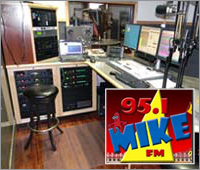
At KMXL-FM and KDMO-AM in Carthage, Missouri, Ron Peterson, Jr. chose WheatNet-IP and Wheatstone E-4 consoles when going digital.
"The air staff could not be happier," says Ron Peterson, Jr., Station Manager. "Our station now has the cleanest, clearest, loudest sound on the dial, thanks to the digital audio chain and Vorsis VP-8 processor."
Remaining competitive is key in radio, and Ron feels he’s ahead of the game with a sound rivaling the big-market stations nearby. His facility is as future proof as the latest technology allows!
Mt. Rushmore Has It. VP-8, That Is.
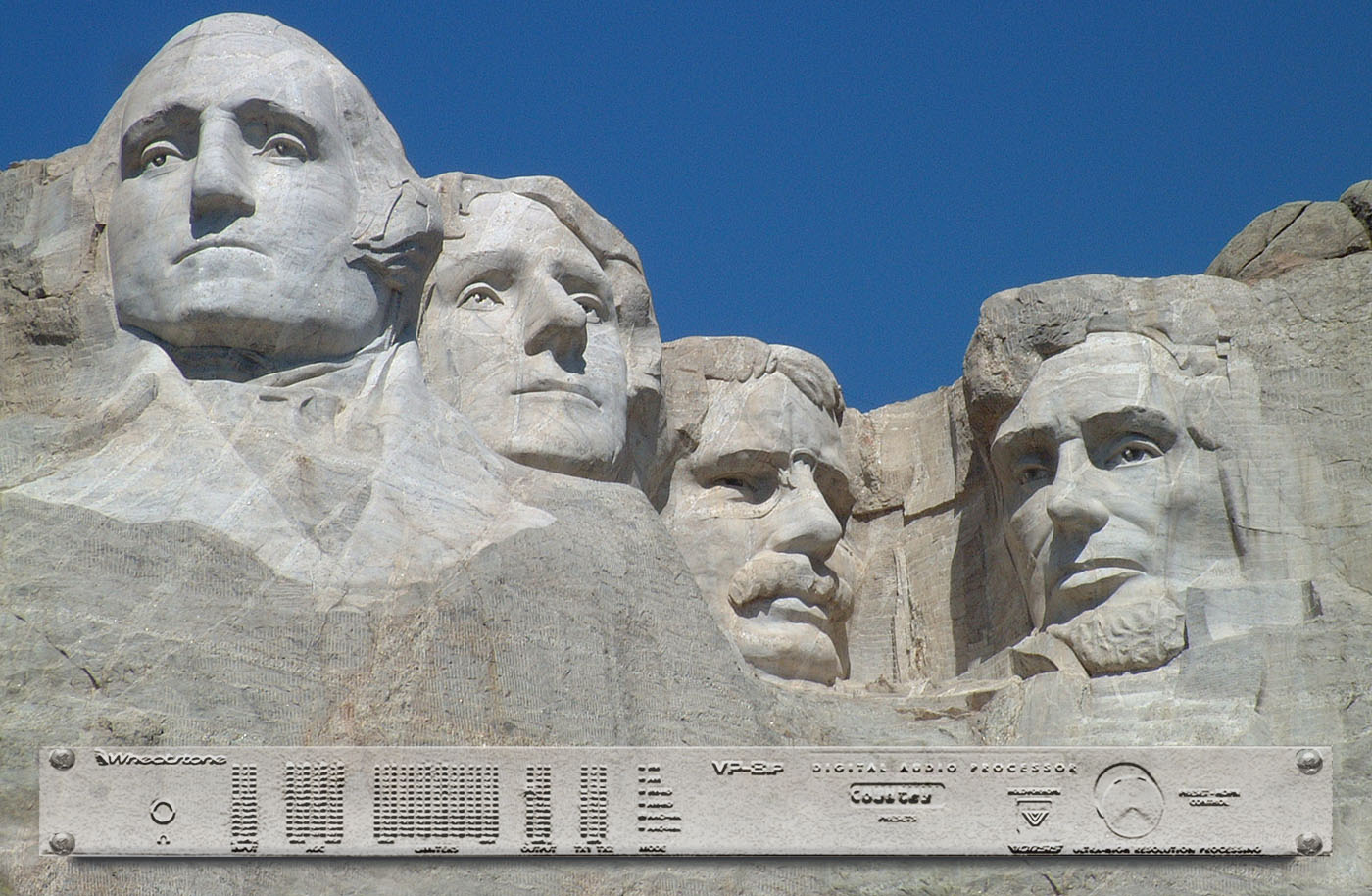 You've got to wonder. What do stations in Arbitron market 275 – the last ranked market in the United States in recent books – use for audio processing?
You've got to wonder. What do stations in Arbitron market 275 – the last ranked market in the United States in recent books – use for audio processing?
We can tell you what at least five stations in Casper, Wyoming, use for audio processing. In fact, all five stations owned by one of the few remaining mom and pop radio operations in the country, known as Mt. Rushmore Broadcasting, use one audio processor, the VP-8 Plus. You read that correctly. One audio processor for all five stations – which, by the way, broadcast a variety of formats, from talk to top country.
Why the VP-8 Plus? Because, according to Mt. Rushmore Broadcasting’s Engineering Director Virgil Scigla, the VP-8 Plus delivered the best sound of all the units they lined up and tested. (Thanks to our friends at BSW for arranging the demo.) “The Wheatstone VP-8 processor delivered the Cadillac sound we were looking for at a very reasonable cost. The range of preset audio formats is quite extensive for any music or talk format out there. The web-based interface makes these units just about plug-and-play out of the box. None of the other audio processors have such ease of setup. Plus modifying the preset audio settings is a breeze to custom set your format,” he said.
Talent Uninterrupted
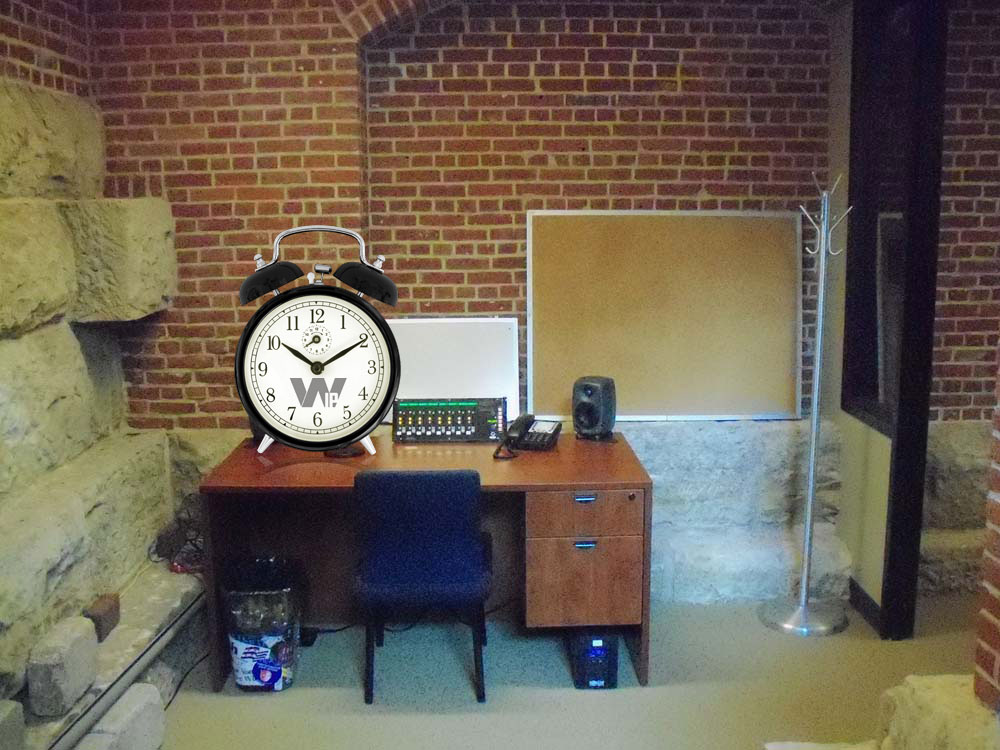 Meet the engineer who turned our WheatNet-IP into an alarm clock, the very same who set up a studio "on the side" for a reporting team that wanted an office-like feel for their new remote studio digs at the state capitol.
Meet the engineer who turned our WheatNet-IP into an alarm clock, the very same who set up a studio "on the side" for a reporting team that wanted an office-like feel for their new remote studio digs at the state capitol.
Greg Manfroi, the CE for WUIS-FM in Springfield, Illinois, said he was asked by management to come up with a solution for the new morning talent who was having a difficult time adjusting to his early sunrise schedule. The public station's automation is programmed to stay with the NPR overnight feed until the morning guy arrives in the wee hours of the morning – if, in fact, he arrives at the appointed hour. A no-show could be a big problem.
So, Greg decided to set off an alarm using WheatNet-IP scripting that could alert staff should the new guy hit the snooze button one too many times. A remote control dials out to the home phone of the morning host followed by the home phone of the news director. To make this happen, Greg found an old dial-up remote control switch and through custom scripting he developed himself using our tools, is now monitoring the WheatNet-IP audio feed from the news studio to the air studio. When it doesn't "see" the feed between the two studios within a certain window of time, the remote control closes a relay that then activates a logic command (if/then) in one of the station's WheatNet-IP BLADEs (or nodes). He programmed the BLADE logic so that the remote control dials out with a recorded message that the morning host has not shown up yet.
Greg is probably one of our more advanced users, so his creative use of his WheatNet-IP system shouldn't surprise us. He recently set up a remote studio in the Illinois Capitol Bureau building using just two SideBoard turret surfaces and a WheatNet-IP BLADE. As our WheatNet-IP fans know, the SideBoard is a small rackmount or turret-sized console with just the basics -- a few faders and buttons and some metering and monitoring (it's small, that's why we call it a SideBoard). Greg swapped out full-size boards with these for a new team of reporters who wanted more desk space in their studio at the state capitol. He used scripting to control which SideBoard would feed the phone hybrids and the ISDN link from the state capitol to the home studio, and he used scripting again to add program and audition to the SideBoards so that the reporters would have all the functions they needed and still get more of an office feel in their new studio.
With that kind of attention to talent, we bet Greg has a lot of friends at the station.
Bringing Logic to Ramar
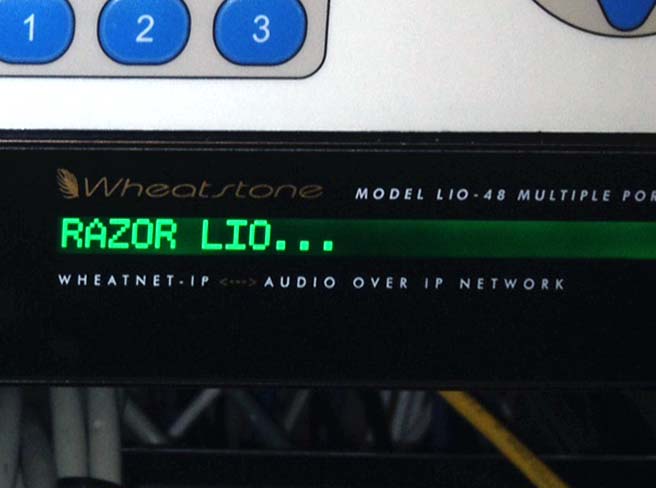 When Chris Fleming at Ramar Communications in Lubbock, Texas, told us about an intermittent contact closure issue that plagued his 16-station hybrid routing system, we hoped it wasn't something too out of the ordinary.
When Chris Fleming at Ramar Communications in Lubbock, Texas, told us about an intermittent contact closure issue that plagued his 16-station hybrid routing system, we hoped it wasn't something too out of the ordinary.
The group's two proprietary routing systems for nine television stations and a WheatNet-IP audio system for seven radio stations seemed to talk to one another okay, but there was definitely something missing. When piping certain outside sports programs into the two AM control studios, our trusty E-1 consoles received the feeds just fine, but talent had to fire commercial and ID breaks manually. Which meant someone had to be in the studio to monitor closures throughout the day, therefore defeating the purpose of automating the feeds through a network system.
The good news was that all the routing was sound. Any console position in the building could take a feed from any other console position in the building, which was a mastermind of network interchanges between a proprietary main and sub routing system feeding the television stations and the WheatNet-IP system feeding the seven radio stations.
Fleming and his group engineer Chris Sisemore attempted several workarounds to fix the problem before they happened to mention it to our Jay Tyler at the recent TAB conference in Austin.
"The completely bizarre thing about it was you could look in the system and see the trigger for the contact closure, but of course nothing would happen," said Fleming, who at first suspected a bypass on the proprietary side of the system.
As it turns out, there was a logical solution to the problem.
Found lacking was the logic necessary to handle the volume of control needed for the seven radio stations, most of which are automated through the network and fed by a maze of program feeds coming in from football and baseball games and external shows.
The solution: our new LIO-48 high-density logic BLADE, which became a sort of junction box for outside feeds entering the radio studios. The LIO-48 BLADE can be added onto any WheatNet-IP system for 48 logic ports capable of triggering more events and turning on/off more devices in the network.
Our systems engineer Kelly Parker replicated the fix at our factory, and an LIO-48 unit was subsequently sent to Ramar Communications with instructions.
All 48 logic ports are now handling the large volume of external feeds coming into the stations without incident, relieving station staff of console duty during certain sports events.
Sweet Sixteen
 A lot has changed since 1998, but not the console brand used at KOTZ-AM/KINU-FM in Kotzebue, Alaska. Day in and day out for the past 16 years, these public stations in Alaska have relied on Wheatstone consoles.In addition to the original A500 Wheatstone consoles, Chief Engineer Pierre Lonewolf purchased D-75Ns for the stations in 2007 and more recently purchased an Audioarts Air-3 console for the stations' newsroom.
A lot has changed since 1998, but not the console brand used at KOTZ-AM/KINU-FM in Kotzebue, Alaska. Day in and day out for the past 16 years, these public stations in Alaska have relied on Wheatstone consoles.In addition to the original A500 Wheatstone consoles, Chief Engineer Pierre Lonewolf purchased D-75Ns for the stations in 2007 and more recently purchased an Audioarts Air-3 console for the stations' newsroom.
Of Pizzas and Processors
By Daniel Hyatt (a/k/a Dangerous Dan), Director of Engineering, Jack FM 107.1 and Jammin' 101.5, Denver, CO.
"Audio processing. Some dread these two words, some embrace it as an art, but ultimately the most critical task bestowed upon an engineer is setting up the audio processing," said Dan Hyatt, a.k.a. Dangerous Dan, who installed one of the first AirAura X3s at his stations in Denver, Colorado.
In early 2013, I set out on a mission to make my Rhythmic A/C and Jack FM the loudest and most clear sounding stations in the market. Under normal circumstances this would be an easy task, accomplished by purchasing any one of the latest and greatest processors from any of the top brands, then making a few adjustments beyond a preset. However, I am in Denver where the loudness war never ended. This meant I had to have the ability to take things two steps further in loudness, while somehow preserving the integrity of music that spanned decades.
Like many of you reading this article, I am the Lone Ranger of engineering for my cluster. I have a trustworthy IT sidekick, fortunately. It was up to us to transmit nothing less than amazing audio. After nearly five months of testing, with input from management, program directors, air talent and a sample group of listeners, we found the perfect solution for our processing problems: the AirAura X3.
Ingredients of a Good Processor
The testing was broken down into a number of categories, including cool factor, learning curve and manipulation, audio quality/loudness and technical support. The winner in each category was without question the Vorsis AirAura.
Our first test was the "cool factor." The AirAura X3 nailed it with the Star Trek-ish background of the cosmos on the control screen and stack of graphic interface choices on the second screen. Yes, there are actually two screens on the face of the AirAura X3! The numerous choices in graphic display are actually test screens ranging from a 3-D plot of the audio spectrum to a loudness meter. Our staff jokingly gave the AirAura a 9.9 out of 10, as it's still missing the flames that shoot out when we hit the peak on the loudness meter.
The second test performed was "learning curve and ease of user manipulation to achieve a desired result." The test was performed without reading the manual or calling tech support for help. That was a bonus because, as we all know, in the real world, sometimes you're stuck on a mountaintop fending off snow, mythical creatures and sleep deprivation just to turn up the bass. After years of dealing with strange settings and trying to figure out what a delta-threshold-realignment mid-high-sample-enhancement-reducer knob did, it was a relief to know the AirAura X3 was designed with straightforward controls that appeal to anyone with a basic audio background. The front panel of the box provides basic setting controls to get you on the air and sounding good. An easy-to-digest and very realistic appearing GUI allows full control of all parameters any user will ever need to get the exact sound they want, and allows you to make those adjustments remotely, even from a man-cave while eating Chinese carryout.
The third test was titled "loud and clean, a.k.a. destroy the competition." In the past, I've had to rely on a rack of pre-processors to get the manipulation I really needed. With the AirAura X3, I have a complete toolbox of pre-processing, enhancement, equalization, compression and limiting at my fingertips. For a conservative approach on a format such as classical or jazz, a user can choose to bypass one or more stages of processing while keeping the 31 band limiter in line to retain complete control of peaks while providing listeners of HD and analog with an aural experience that is non-compromising of critical detail. For aggressive markets like ours, users can capitalize on all the horsepower under the hood.
No Burnt Pizzas Here
My personal approach to audio processing is to prepare it like a pizza, in which the assembly of ingredients in perfect fashion are like pre-processing and the baking stage is like the final processor. In short, all the effort has always gone into getting the audio sounding correct before the main processor, while using compression and limiting as a way to simply finish the product by producing loudness. With the AirAura X3, I have a complete pizzeria in one box, and the pizza never comes out burnt.
The four-band parametric EQ allows for a pre-processor style tweak to get the audio the way you want it to sound before the compression and limiting stages. Five bands of AGC, compression and stereo enhancement finish off the pre-processing stage. Both the AGC and compressor feature independent attack, release and threshold settings for each band. Back off controls and inter-band coupling adjustments are also available to allow minor, but often critical, adjustments for the AGC. The AirAura X3 features a stereo enhancement control that allows not only overall drive, but independent control of five enhancement bands. The enhancement section is a game changer that gives the user the ability to reach out and grab the listener through adjustment by format; it's not just an up and down knob.
The AirAura's 31-band limiting section sets it so far apart from the competition that to invest in anything else is simply a waste of money. Independent control of threshold, attack and release of each band, plus the ability to couple or decouple any of the 31 bands to each other will satisfy the most detailed engineer. The 31-control creates a listening experience in which every detail is heard. Gone are the days of a kick drum sounding like a bad exhaust pipe; mids and highs are open. After listening to the AirAura X3, you will hear instruments you've never heard in songs and detail in vocals that will make you feel as if you've pulled the cotton plugs from your ears.
An added detail to the limiting section is the Bass Tools. Much more than just an enhancer, the Bass Tools is an actual side chain bass control. One program director commented that he wanted more kick. He came back within minutes of our adjustment to the Bass Tools, commenting on how his factory stereo now sounds like he has a subwoofer and still sounds cleaner than any station on the dial.
Our final test was tech support. After listening to my processing theory, the Vorsis staff took time to explain different methods of adjusting settings that fit my approach. They took time to help adjust settings and even build presets to help me get started and moving in the right direction. Quite the refreshing change from past experiences with other manufacturers.
A colleague once told me, "The listener can turn up the volume, but they can't turn down the distortion." The days of choosing between loud or clean are over. The AirAura X3 is the Holy Grail of audio processing, so much so that it should have its own theme song in my opinion.
*Editor's note: In case you're wondering, we're told that Dan is called Dangerous Dan because of his turntable skills.
Fairchild Toronto Goes WheatNet-IP
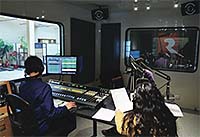
When Fairchild Broadcasting needed to move its two multilingual stations in Toronto -- PRONTO -- the networking technology of choice was Wheatstone's WheatNet-IP.
Download a reprint of the full story below, courtesy of Broadcast Dialogue.
![]() Fairchild Moves Two Stations with WheatNet-IP (2.41 MB 2013-06-20 12:53:32)
Fairchild Moves Two Stations with WheatNet-IP (2.41 MB 2013-06-20 12:53:32)
Wheatstone Central to CKUA's Epic Move
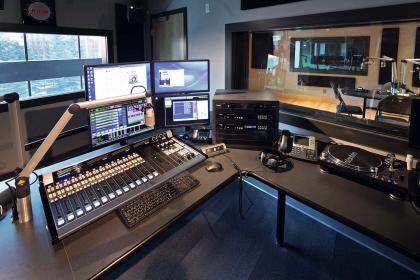 For the CKUA project, we set up our WheatNet-IP AoIP networking around a central production studio surrounded by control rooms, voice booths and newsrooms that share I/0 and line-of-sight between them.
For the CKUA project, we set up our WheatNet-IP AoIP networking around a central production studio surrounded by control rooms, voice booths and newsrooms that share I/0 and line-of-sight between them.
Included in the WheatNet-IP are full network control and access from the LX-24s, so announcers can pull up sounders and source feeds from all over the complex – especially that vintage library, which CKUA now has on 67 terabytes of storage. CKUA is one of the few remaining stations that still gives its on-air hosts free choice in programming.
Our equipment list included four Wheatstone LX-24’s, six Audioarts IP-12 surfaces, two SideBoard surfaces and 20 some WheatNet-IP BLADEs, or IP access nodes, to tie it all together. There’s not a soundcard in the entire, three-floor facility. Kris Rodts, Director of Engineering, IT, and Facilities for CKUA, gives all the details in the cover story of the June issue of Radio magazine. You can download a reprint below, courtesy of Radio.
![]() Read The Whole Story
Read The Whole Story
(Radio, June 2013) (1.02 MB 2013-06-18 15:05:41)
Here's a video that the local news did on CKUA last October. It shows one of the very first LX-24s in operation!
Seven Stations. One 1RU Aura8-IP Audio Processor.
![]() Quick. How many stations can you fit into a 1RU Aura8-IP processor unit without it sounding like you’ve crammed one too many into the proverbial phone booth? (Just for the record, Dr. Who’s TARDIS doesn’t count.)
Quick. How many stations can you fit into a 1RU Aura8-IP processor unit without it sounding like you’ve crammed one too many into the proverbial phone booth? (Just for the record, Dr. Who’s TARDIS doesn’t count.)
Our friends at MediaWorks in New Zealand tell us the answer is seven – eight, if you include the additional AM they stuck on one of the processing channels just because they could.
“We have seven formats coming out of that one processing BLADE. Seven different formats. And, the really remarkable thing is, we never thought we’d get any significant performance, processing wise, out of it. We were prepared for a compromise, but guess what? That little processing unit totally blows away the rack of Optimods, Aphex’ and Omnias we had,” said Craig Vause, MediaWorks New Zealand Engineering Manager.
Without much more than a few rack spaces to spare at the Queenstown studio, New Zealand’s largest radio network group decided to give the 1RU Aura8-IP a try because of its size and price, among other things. Most broadcasters use the Aura8-IP for processing multiple streams, HD channels or podcasts, although the unit does have full AGC, compression and limiting (including four-band parametric equalizer and three-band compressor) for eight separate channels.
“Given the unit’s size, the best we hoped for was to be able to consolidate racks and racks of equipment without it sounding like we were doing so,” said Marcus Bekker with Southern Broadcast Limited, Wheatstone’s New Zealand rep. “It never occurred to us that the Aura8-IP might actually improve the sound!”
So into one rack space went the Aura8-IP to handle all the processing for seven stations – from talk to rock – and into another rack space went our audio over IP networking access unit, or the WheatNet-IP BLADE, for all the individual commercial injection and local commercial split feeds. We’re told that all the mixing and routing that was traditionally done with outboard gear and switches has all been scrapped and is now contained in these two Wheatstone BLADEs.
To get all seven channels (which, combined, come to nearly 2 Mbps of eAPTx audio) across from Queenstown to the transmitter site in Alexandra, they commissioned an IP backhaul C.R.O.W circuit and used Oslo NextGen codecs to transport the payload. The group’s transmission division installed BW Broadcast DSPmpx Stereo Encoders at the Alexandra transmitter site to handle the coding and final limiting stages.
MediaWorks has also just put in for new L-8 and LX-24 consoles with WheatNet-IP Intelligent Networking for the total rebuild of its Christchurch studios that were damaged during the recent earthquakes there. More on this later.
Dark Fiber & WheatNet-IP in Portland

Interesting doesn’t even begin to describe what Clear Channel Portland is doing with dark fiber, WheatNet-IP audio over IP, live traffic cams, and two transmitter sites.
Clear Channel Portland Director of Engineering Chris Weiss plugged single-mode fiber optic cable into the SFP modules in the Cisco switches at the edge of the WheatNet-IP network, and voilà! Light. Audio. Action. It’s an STL. Instead of T1s to two of the group’s transmitter sites outside of Portland, he’s running WheatNet-IP audio to the sites on strands of fiber as a primary STL.
We’re all for fiber. From a purely technical standpoint, you can run audio through miles of the stuff without picking up noise. End to end, fiber optic is amazingly clean because it’s made of silica – or sand. You get none of the electrical interference that’s the ban of CAT6 cable past the 100-meter mark, and you won’t have to wait for an act of Congress to get an STL frequency on the 950 MHz band.
Plus, it’s relatively easy to interface to our WheatNet-IP BLADEs, or AoIP access nodes. In Weiss’ words: “The thing about AoIP is that once you turn audio to ones and zeros on the network, you can now do just about anything over IP.” Clear Channel Portland has BLADEs at its downtown studio and the same at each of the transmitter sites. The group added another IP BLADE at the Rose Garden arena for its Portland Trail Blazer feed, and has a broadband fiber optic connection to the video circuits and camera feeds at the Oregon Department of Transportation for Clear Channel’s Total Traffic Network (real-time traffic data service).
The hardest part was getting usable fiber optic connectivity at an affordable price. Weiss said cable companies will talk to you all day long about fiber optics, but buyer beware. There’s often excessive latency on lit fiber because the payload is likely to be routed over someone else’s circuit before it gets to you. (Latency is something we don’t have to deal with at Wheatstone, as the company with the Gigabit Ethernet AoIP system. WheatNet-IP is the only AoIP system for radio that uses fast, or Gigabit Ethernet connectivity; audio latency just isn’t an issue on the WNIP network.)
But not so for dedicated dark fiber, which is essentially unused fiber optic cable left over from the dot-com glut that was once expensive but now can be had for a couple hundred dollars a mile. Clear Channel Portland fell into dark fiber because of a series of telecom acquisitions and divestitures in the Portland area that loosened the grip on dark fiber and made it accessible at an affordable price.
Currently, Clear Channel Portland is in the process of extending fiber to an AM transmitter site, where the group has been using a traditional T1 multiplexer. “We’re going to convert everything at the site to a network, so I’ll probably put a BLADE out there as well to handle the audio,” commented Weiss, who goes as far to say that IP networks are fast becoming the core of radio business these days.
We couldn’t agree more.
WheatNet-IP's HUGE at Clear Channel Seattle
Clear Channel Seattle recently moved into a new, state-of-the-art 36,000 square foot facility on Elliott Avenue, and WheatNet-IP from Wheatstone is the audio-over-IP network that's tying it all together. 7 stations and 21 studios are interconnected by a network consisting of more than 75 WheatNet-IP BLADEs and 15 Wheatstone control surfaces.
Writing for Radio World, Bill Major, Clear Channel Seattle's Assistant Director of Engineering describes the new facility, the process that brought it all together, and his experiences. You can download a PDF reprint by clocking the link below.
pdf Extreme Studio Networking at Clear Channel Seattle (830.3 kB)
Tee Time
 Meet Tee Thomas, who is a bit of an audio eccentric even by our standards. It's straight up 24-bit, 44.1 kHz sampling all the way for his stations in Lubbock, Texas. And by way, we mean Wheat Net-IP AoIP routing through fiber optic link from the studio to the transmitter site. So, when Tee says he's gone kind of nuts with the Wheatstone stuff, we have to wonder.
Meet Tee Thomas, who is a bit of an audio eccentric even by our standards. It's straight up 24-bit, 44.1 kHz sampling all the way for his stations in Lubbock, Texas. And by way, we mean Wheat Net-IP AoIP routing through fiber optic link from the studio to the transmitter site. So, when Tee says he's gone kind of nuts with the Wheatstone stuff, we have to wonder.
There’s something you need to know about Tee Thomas, aside from the fact that he’s Ramar Communications’ Chief Engineer for three FMs, an AM and ten TV stations in Lubbock, Texas.
He’s a bit of an eccentric when it comes to sound quality, even by Wheatstone standards. He’s known to squeeze every bit of quality from audio. We can’t tell you some of the cool audio techniques he revealed to us (we promised), but we can tell you that he installed the WheatNet-IP AoIP Intelligent Network earlier this year using about 15 BLADEs, and elected to use software drivers for his BSI OpX automation system instead of soundcards. No 16-bit, 44.1 kHz sampling for his stations. It’s straight up 24-bit, 44.1 kHz sampling all the way. And by way, we mean WheatNet-IP AoIP routing into a fiber optic link to the transmitter site.
As a result, he says, the sound is more dynamic and open and loud. “The WheatNet really improved the quality of broadcast because while most of the digital audio equipment is 16-bit, 44.1 kHz (sample), the BLADEs are 24-bit, 44.1 kHz (sample) so you have so much more bit depth and the audio quality is so much more superior than standard audio,” explains Tee, who admits he’s gone “nuts with the Wheatstone stuff.”
He has two E-1 digital consoles and a smattering of digital boards that run off the WheatNet-IP. He has mic processors built into most of them, many used as pre-processors for streaming, which Ramar Communications does a fair amount of these days. No surprise, then, that he has a couple of BLADEs with audio processing built in for each of the 16 streams feeding the stations’ programming on the web. The Aura8-IP BLADEs take up two rack spaces for all 16 streams. Sixteen streams of multiband processing in two rack units? It still amazes us.
Audio programming comes out of a server in the back room, then goes through a network cable to the studios, and then to the fiber optic link out to the transmitter. It’s 100 percent IP all down the line.
Tee says he noticed the difference in quality immediately after installing the BLADEs.
We’re not surprised.
Aura8-IP Handles Northeast Cluster
![]() Writing in the October 24, 2012 issue of Radio World, Bud Williamson describes the installation of an Aura8-IP at Neversink Media Group in Port Jervis, NY. In the article, Williamson notes that he's received compliments on the audio quality of his streams.
Writing in the October 24, 2012 issue of Radio World, Bud Williamson describes the installation of an Aura8-IP at Neversink Media Group in Port Jervis, NY. In the article, Williamson notes that he's received compliments on the audio quality of his streams.
You can download a PDF reprint of this article here, courtesy of Radio World magazine.
![]() Aura8-IP User Report from Radio World (646.17 kB)
Aura8-IP User Report from Radio World (646.17 kB)
Maine’s Hot 104.7 Chooses Audioarts and AirAura
By Mike Erickson
 Christmas came early, and with it a new sound for Portland and Southeast Maine.
Christmas came early, and with it a new sound for Portland and Southeast Maine.
Mainestream Media’s new Hot 104.7 is a rhythmic CHR that launched on September 14, 2012 with 5000 songs in a row following a one day stunt as the first Christmas station of 2012. Along with the creative imagining, music and talent planned for the station came a need for it to find a unique audio signature in the market.
Mainestream’s Dom Theodore, known in the industry for his audio that almost literally leaps off the dial, wanted to take Hot 104.7′s sound to an entirely new level. “We looked at a number of processing alternatives and came up with something that went past anything else on the market today. I worked with Wheatstone’s Mike Erickson on audio when we worked together in New York City few years ago, and I turned to him on this project to help take the audio where I needed it to go. Honestly, I didn’t think this much CLEAN bass was possible on an FM station.” Theodore is talking about the station’s new AirAura. Installed just before the launch, the AirAura has already given Mainestream a leg up in the market, something very important to the new kid on the block.
Ryan Dillon, Hot 104.7′s program director, loves the sound of his new station. “The first two things a listener notices when they tune in is the song playing and the quality of the audio. I knew we had the first part nailed, but with the AirAura, we now have both!”
Along with the AirAura, Hot 104.7 also purchased Audioarts consoles for their main and production studios. The ease of install and the price, combined with the quality of the product, made the choice a no brainer.
“We’re creating THE go-to company for creative people” said Theodore. “With Wheatstone, we have the tools needed to help our creative people get our content on the air the way we want it.”
Beasley Las Vegas Distress Call
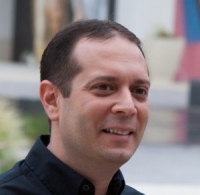 We’re suckers for a good studio renovation project. We tend to gawk at new studios like others rubberneck at cars on the side of the road. We’ve been involved in our share of studio projects as engineers working in the field before our time with Wheatstone, and some of us still help out with new studio installations.
We’re suckers for a good studio renovation project. We tend to gawk at new studios like others rubberneck at cars on the side of the road. We’ve been involved in our share of studio projects as engineers working in the field before our time with Wheatstone, and some of us still help out with new studio installations.
We know all too well how difficult these projects can be. Before anything remotely like WheatNet-IP audio-over-IP networking, we pulled cable until our arms came out of their sockets. We probably hammered down enough subflooring in our time to cover the New York City underground system. So when we got the distress call that Beasley Broadcast in Las Vegas needed to move two of its five stations before renovation on new studios even began, we had to really feel for engineer Lamar Smith.
We secretly wondered what horrible thing Lamar did in his recent past to deserve such a punishment. As we soon learned, though, the lease ran out on the two stations’ existing facility, which made it far more cost-effective to move them into makeshift studios before renovation on the new facility began.
We didn’t envy Lamar the extra headache in what was already a big project ahead of him, but we were able to assure him that the WheatNet-IP Intelligent Network was going to make life a whole lot easier in any case. “They were right about that. The WheatNet system is why we were able to move two radio on-air studios and two production studios in three weeks,” said Lamar, who racked up a couple of WheatNet-IP BLADEs, moved in four E-1 control surfaces, and let the system do the rest. (WheatNet-IP configuration is done automatically; all Lamar had to do was unbox the units and plug in the Cat6 cable.)
“We literally have three Ethernet cables between the rack room and the (makeshift) studios,” he added.
With full renovation just getting underway this month, Lamar will be building out and networking six new control rooms, four production studios, a news room and several production/news booths to house the two existing stations as well as Beasley’s three other Las Vegas stations that will move over later this year. He’s bringing in 24 WheatNet-IP BLADEs, repurposing four E-1 control surfaces and adding several new LX-24 consoles for the control rooms. He’ll also be using some powerful WheatNet software to get the job done in time, including our X-Y System Controller for tracking crosspoints and our Glass-E virtual mixer as backup remote control of surfaces, while construction is being done in several phases.
All of which he’s putting to good use … now. ‘’We had an incident where the cleaning crew came through and must have turned down the faders while cleaning the (E-1) board. Good thing we’re set up already with WheatNet, because through Glass-E (a virtual mixer) I was able to go online and turn all the faders back up without leaving my house,” commented Lamar.
At least the emergency move came with some benefits.
WheatNet-IP and BSI's Op-X Provide Powerful Solution at WCNN
A recent article in the October, 2011 issue of Radio World magazine tells the story of Dickey Broadcasting's effort to combine three sports stations into a single Atlanta facility. Wheatstone's WheatNet-IP and BSI's Op-X automation system worked together to provide a powerful solution. You can download a reprint of the full article below.
pdf WCNN Atlanta Uses WheatNet-IP and BSI OP-X (523.63 kB 2013-04-12 10:45:23)
WheatNet-IP Smooths IP Transition for Sandusky Seattle
In August of 2011, Radio World featured an article by Rob Purdy of Sandusky Broadcasting in Seattle. Rob talks about how WheatNet-IP smoothed his facility's transition to networked digital audio technology.
You can find a reprint of that article here:
![]() RW: WheatNet-IP Smooths Digital Transition (Rob Purdy) (560.18 kB 2004-08-27 00:00:00)
RW: WheatNet-IP Smooths Digital Transition (Rob Purdy) (560.18 kB 2004-08-27 00:00:00)
Beasley Philly Goes WheatNet-IP
Beasley Broadcasting recently purchased a system for their Philadelphia cluster built around Wheatstone's WheatNet-IP routing system. Included in the equipment purchased were a total of 8 Evolution-series consoles (3 E-6 and 5 E-1). Their system will also use the new Aura8-IP Vorsis Embedded audio processing BLADEs, as well as a full complement of WheatNet-IP BLADEs.
Keizerstad FM
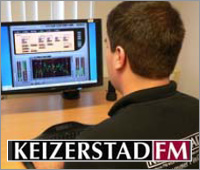
Keizerstad FM, The Netherlands, recently installed a Wheatstone VP-8 Plus audio processor. The station, which provides commercial radio programming for the Gelderland province east of Holland, broadcasts on FM, cable, and the internet.
Sound Engineer Glenn Davidson tells us, "In December 2010 we replaced our Omnia 3FM with the VP8 Plus. After some adjusting and support from Dutch Dealer Danny Teunissen, the sound was loud (within Dutch Telecom rules), warm and excellent, giving us clear voices like we'd never had before. No aggressive sound, but if you want you can get it. The very handy remote GUI software includes amazing graphically adjustable settings. This machine is affordable and ready for the digital future."
WHUR Howard University
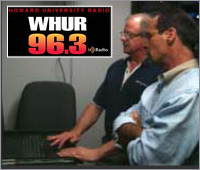 From our Generation-series consoles to our AirAura processors, WHUR-FM, Howard University's radio station, relies on Wheatstone to keep their signal clean and dominant and their talent happy.
From our Generation-series consoles to our AirAura processors, WHUR-FM, Howard University's radio station, relies on Wheatstone to keep their signal clean and dominant and their talent happy.
Pictured here are Wheatstone's Senior Processing Product Design Engineer Jeff Keith and WHUR Chief Engineer Scott Tanner, fine-tuning the AirAura shortly after its installation at the station.
E-6 Headed to WKIS (Kiss Country), Miami
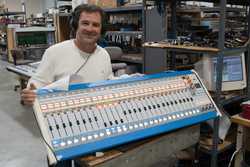 Get a look at this big E-6 console, bound for the #1 country station in Miami, Florida, Beasley Broadcast Group's WKIS "Kiss Country." In the photo at right, Jay Tyler's giving it a once-over as it goes through our usual comprehensive battery of final tests.
Get a look at this big E-6 console, bound for the #1 country station in Miami, Florida, Beasley Broadcast Group's WKIS "Kiss Country." In the photo at right, Jay Tyler's giving it a once-over as it goes through our usual comprehensive battery of final tests.
This new console will complement the other Wheatstone consoles already in place on the Wheatnet TDM network at Beasley's Miami facility. WKIS also has Wheatstone's flagship audio processor, the Vorsis AirAura, on the air and presently making 99.9 a real sweet spot on Miami's FM dial.
VP-8 Plus at Origineel FM, Netherlands
There's new local station on the air in Goes, the Netherlands, and they're starting it off right with a Vorsis VP-8 Plus. Origineel FM's antenna is located at 150 meters above sea level, with the transmitter and processor at 90 meters above sea level.
Station engineer André Poortvliet says, ”We wanted a sound different from the rest -- we have that now with the VP-8 Plus. We also got some great help from Danny Teunissen of DE BroadcastShop; he has created a great preset for us so that our listeners can listen for many hours without becoming fatigued by the heavy clipped sound our competitors have.
WheatNet-IP Central to Corus Quay Project
In a recent article in Radio World, James Careless describes what is billed as "the most advanced broadcast facility in North America." This IP-centric facility has a familiar technology at its very core -- WheatNet-IP.

